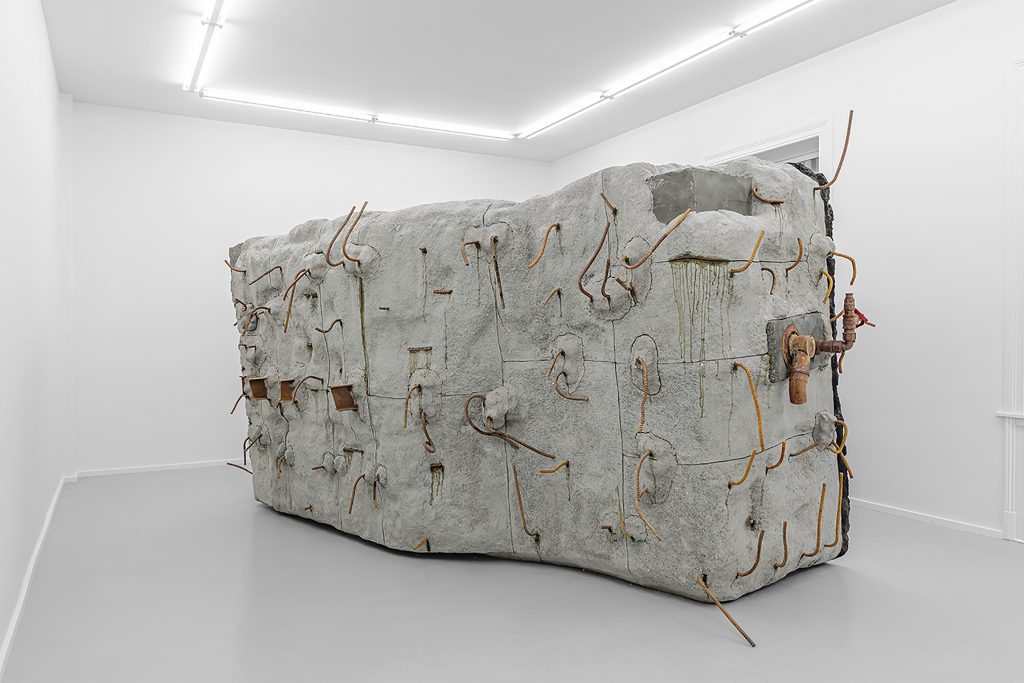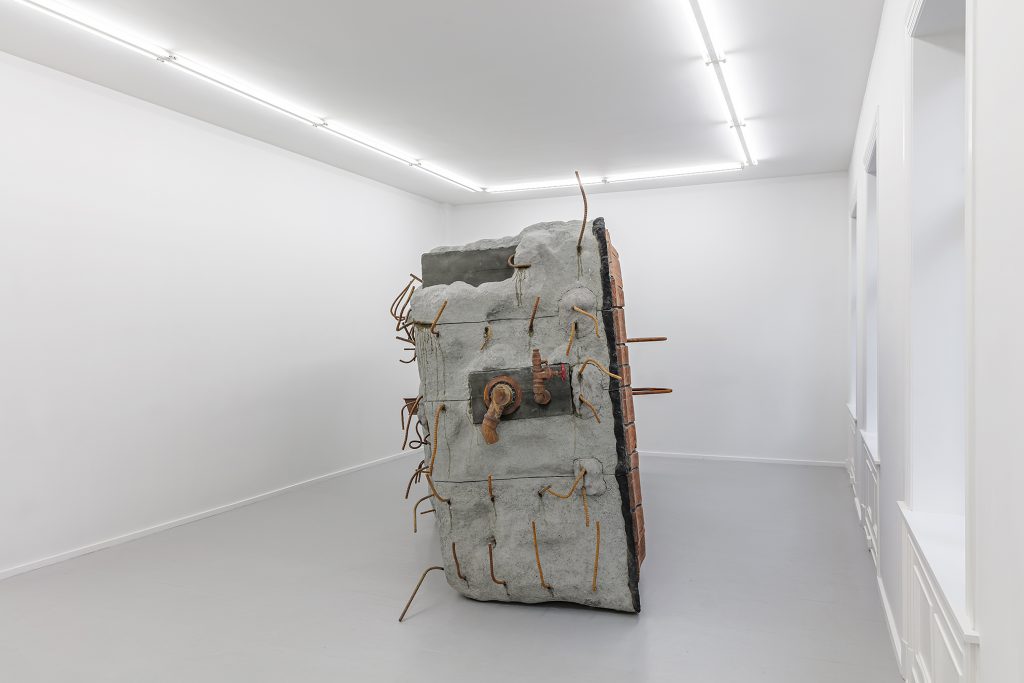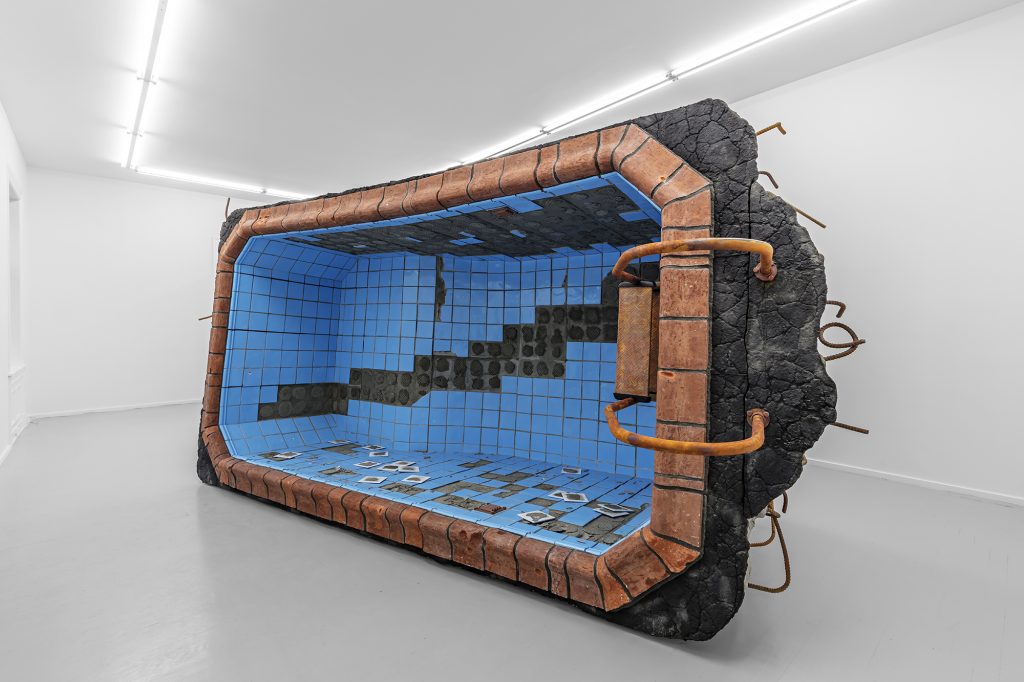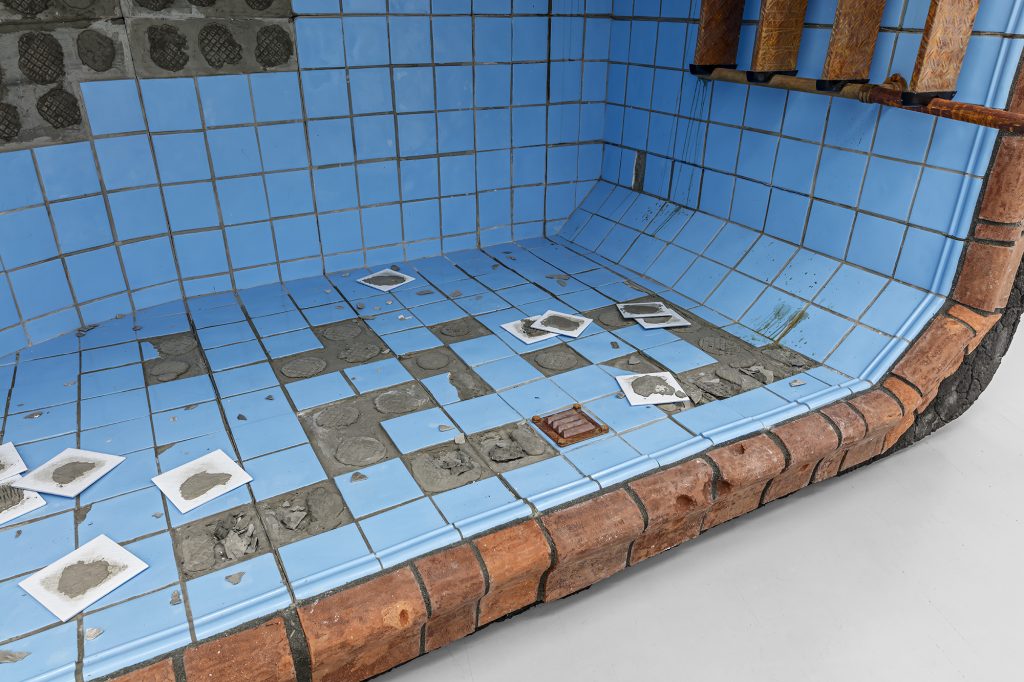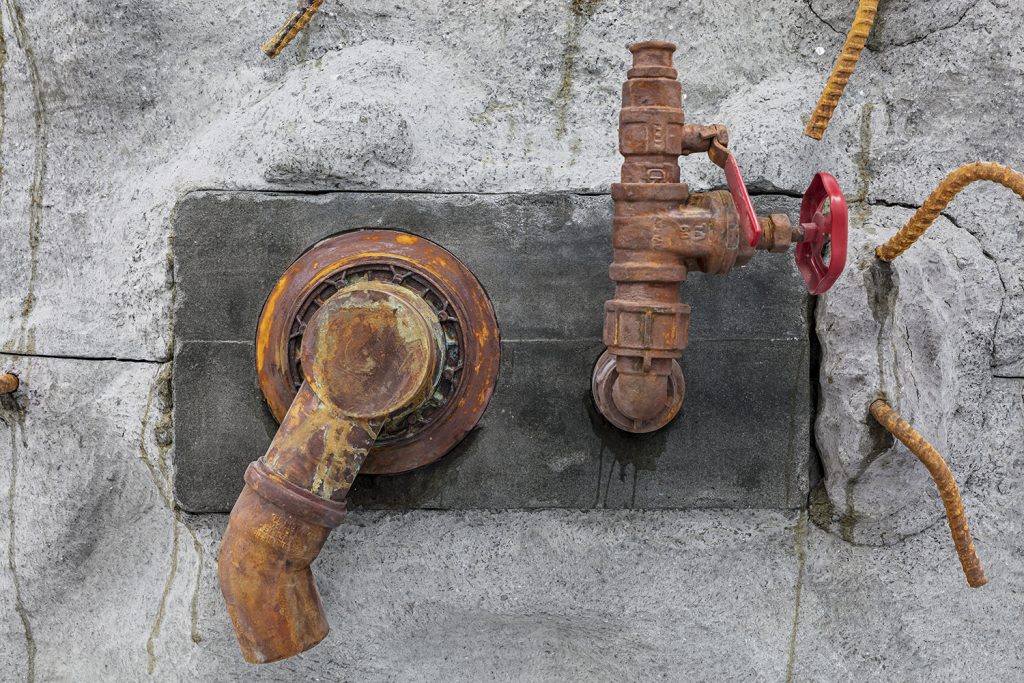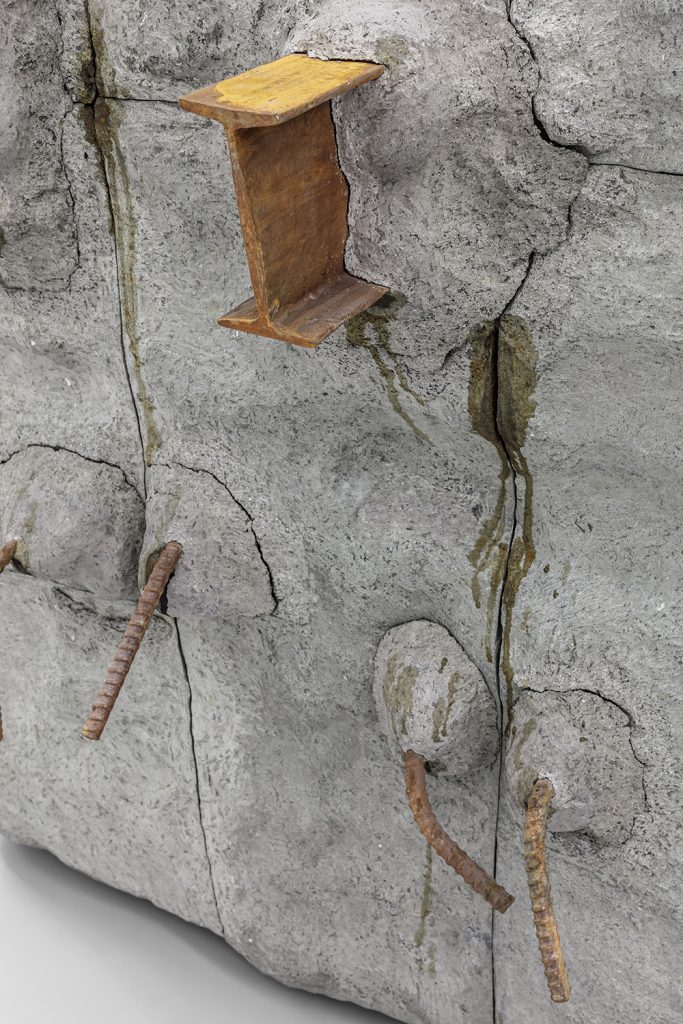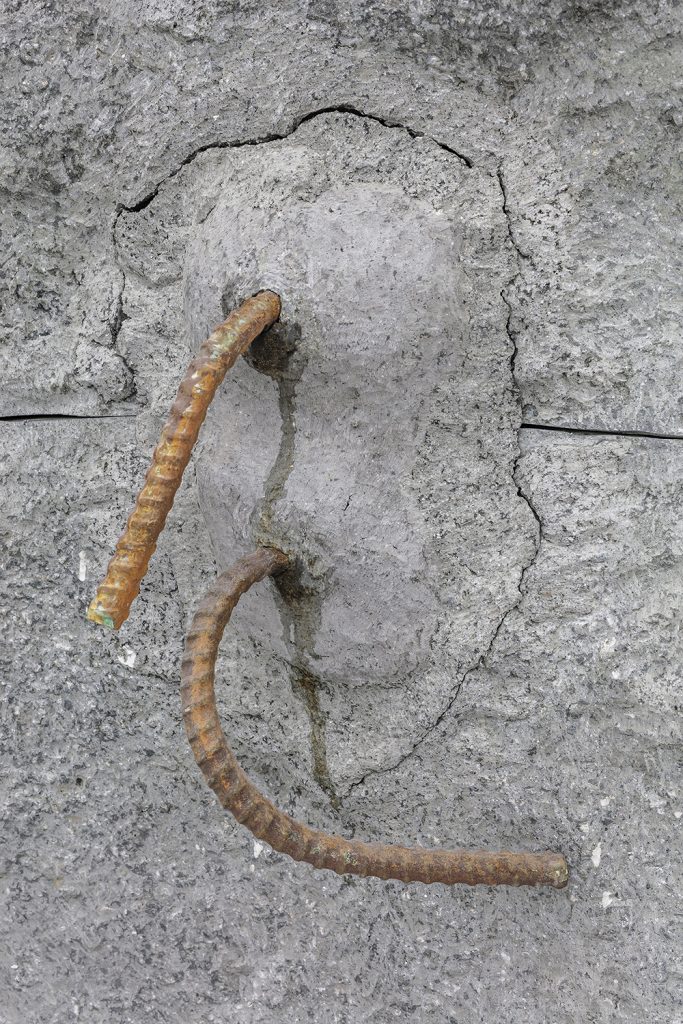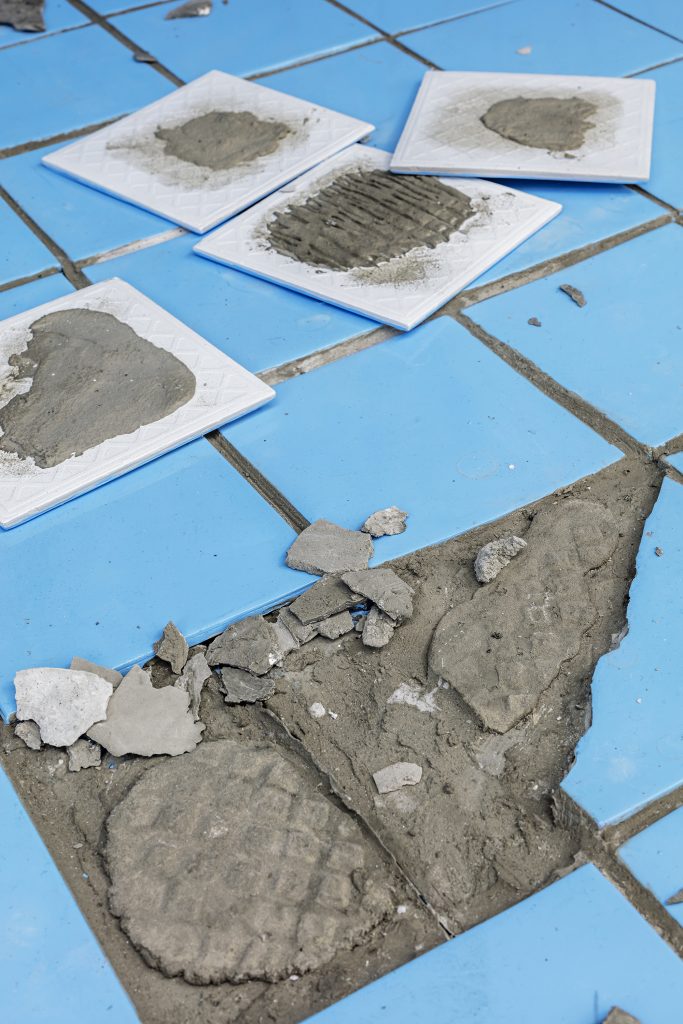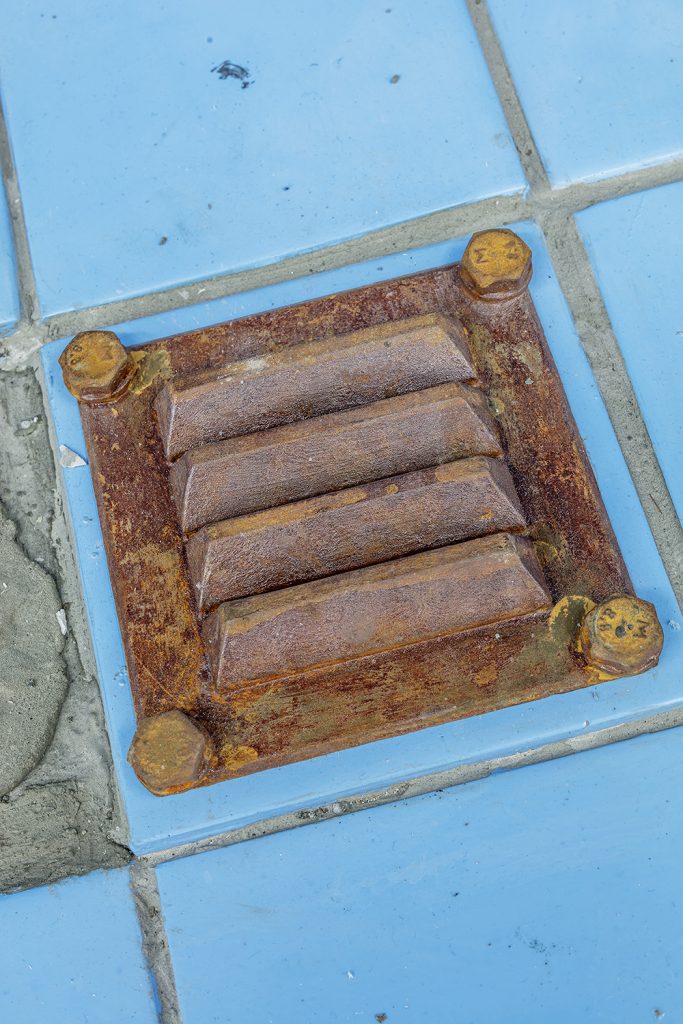Sculpture, 2016
Glue, epoxy, fiberglass, paint, pigment and plastic F18 Dimensions: 230 x 520 x 240 cm
Image view: Galleri Riis, Oslo, Norway
“Sometimes when I got home from work the only thing I wanted to put in my mouth was the cold barrel of my grandfather’s shotgun. Then I discovered Sonia Allison’s Chicken Tetrazzini, and now there are two things…”
Comment of a user of “Microwave for one” by Sonia Allison.1
This publication was a complete failure and strongly criticized. It was branded as an illustration of contemporary decay, loss of cultural identity, and misinterpretation and misuse of new technology. These are topics of interest in my work.
Metaphorically I use the title and history of this book of recipies as a starting point for reflection, discussion, and examination of the question of success or failure. The microwave oven was invented by mistake.
Galleries or museums are entities that usually represent success, the result or the final product achieved by an artist. Work that is born by intuition in the creative process, including failure, repetition, and persistence are surgically presented in the white cube. Very often this creative process vanishes with the institution, and the possibilities of language change, as well as their narrative.
This particular sculpture celebrates and treasures the failure. It attempts to show an experience that has been made physical, an experience which is not necessarily real but constantly questions the definition of reality.
We can point to the fact that the senses are actually relative to our cultural circumstances, meaning that we should not take for granted what we see as real. Therefore, this indicates that the interaction we have with our surroundings is a cultural construct.
The sculpture is a replica in epoxy, fiberglass, f18 plastic, AcrylicOne, Styrofoam, glue, and pigment from an abandoned swimming pool from the 1950s, which was very popular in Cuba.
In 1959, with the triumph of the Cuban Revolution and the change of system from Capitalism to Socialism, and later to Communism, the government ordered the closure of all private swimming pools in Cuba. They classified the swimming pools as a symbol of the privileged class, and only the pools belonging to government members were allowed to continue functioning. Many of the remains of the pools were buried or transformed into dwellings.
The artificial pool is presented in a static form, with no sign of life. Water, which is the only element of movement or life for this type of object, has been eliminated. This accentuates the absence and non- functionality. Thus, the death of the symbol.
The process of ”casting in silicone” forms part of the narrative of my work and the act of copying or imitation refers directly to human need to be part of a social environment.
Many industries have exploited this trend towards standardization of behaviour. A clear example of this is the fashion industry, with one of its main characteristics being to emblematize, categorize and give meaning and power to the object. An example of this is the swimming pool, which I chose for its symbol as the object of the upper class.
In the centre of the piece, it is possible to observe a kind of collapse or a tear of the ceramic or tiles that compose the image of a pool. This reveals by coincidence the dull grey cement that is usually used in this type of construction.
The collapse of the tile seems to suggest an “abstract drawing”, but in fact, the image is based on studies and graphics by The World Bank, and their research into unemployment statistics in Europe between 2013 – 2016. This is the time period in which I worked on the development of this piece. I attach information to the piece at the same time as I subtract elements in its composition, redefining meanings.
1. Sonia Allison, ”Microwave for One” The Book Services Ltd., 1987
